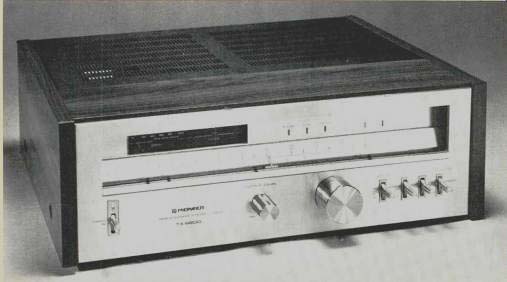
Manufacturer's Specifications
FM Section
Mono Usable Sensitivity: 8.8 dBf (1.5 uV).
50-dB Quieting Sensitivity: Mono, 13.2 dBf (2.5 uV); stereo, 36.1 dBf (35 uV).
S/N at 85 dBf: Mono, 83 dB; stereo, 80 dB.
THD: Mono, 0.04 percent at 1 kHz, 0.05 percent at 100 Hz, 0.06 percent at 6 kHz, wide; stereo, 0.07 percent at 1 kHz, 0.1 percent at 100 Hz, 0.2 percent at 10 kHz, wide.
Capture Ratio: 0.8 dB, wide; 2.0 dB, narrow.
Selectivity: 30 dB, wide; 85 dB, narrow.
Frequency Response: 20 Hz to 15 kHz, +0.2,-0.5 dB.
I.F. and Spurious Rejection: 110 dB.
Image Rejection: 120 dB.
AM Suppression: 65 dB.
Subcarrier Rejection: 70 dB.
Muting Threshold: 19.2 dBf (5.0 uV).
Stereo Separation: 55 dB at 1 kHz, 40 dB from 20 Hz to 10 kHz.
AM Section
IHF Sensitivity, External Antenna: 15 uV.
Selectivity: 20 dB, wide; 50 dB, narrow.
S/N: 55 dB.
Image Rejection: 70 dB.
I.F. Rejection: 65 dB.
Audio Section
Output Level, FM: 650 mV fixed, 50 mV to 1.3 V variable.
Output Level, AM, 30 Percent Modulation: 200 mV fixed, 15 mV to 400 mV variable.
General Specifications
Power Requirements: 120V, 60 Hz, 28W.
Dimensions: 17 3/4 in. (453 mm) w. x 6 3/8 in. (155 mm) H. x 15 3/8 in. (390 mm) D.
Weight: 20.5 lbs. (9.3 kg).
Price: $450.00.
Pioneer has come up with another carefully engineered AM/FM tuner which should appeal to those FM listeners who are less concerned with such things as frequency synthesis and digital frequency readout than they are with good sensitivity, low distortion, and basic drift-free operation. An added bonus is the surprisingly good AM reception which can be obtained from the unit under certain conditions which we will discuss later.
The front panel of the TX-9800 resembles that of other Pioneer components, in that it features a large, highly visible, brushed-gold, sloped dial area, the lower section of which is linearly calibrated for FM frequencies and has the usual slightly compressed frequency scale for AM tuning. Above the frequency notations are a pair of tuning meters at the left (signal strength and center of channel), FM and AM indicator lights at the right, and three more indicator lights in between.
These last three lights denote stereo reception, precise center channel tuning, and the tuning-lock feature. With the function switch set to FM and the FM Muting/Mode switch set to On, this last indicator light comes on when you take your hand off the tuning knob at the optimum tuning point. Its illumination indicates that the built-in quartz-reference locking circuit has been activated by the touch-sensor detector circuit associated with the tuning knob and that the frequency of the local oscillator is locked to track the frequency of the signal to which you have tuned. Four small sliders called "memory markers" can be positioned below the frequency scales as a reminder of the frequency of most-tuned-to-stations.
Along the lower section of the front panel are a power on/ off toggle switch; a rotary Output Level control; a large, flywheel-coupled tuning knob; AM-FM function selector switch; a Narrow/Wide i.f. toggle switch, an MPX-blend or noise-filter switch, and the FM Muting/Mode switch previously referred to. Pioneer has taken the route of permitting the muting feature to be turned off only when mono FM is selected. While we have objected to this approach in the past (preferring the ability to tune to very weak stereo FM stations if we so choose), it turned out during our measurements that Pioneer has set the muting threshold at a sufficiently low level, just below the stereo switching threshold, so that the muting switch arrangement poses no problems under any practical listening conditions.
The rear panel of the TX-9800 contains the usual array of antenna terminals, for 75- or 300-ohm FM transmission lines, external AM antenna lead connection, and "ground." Just below these terminals are an FM de-emphasis switch (with settings for standard 75-microsecond or 25-microsecond de-emphasis), and a switch which alters the sensitivity of the touch-sensor feature on the tuning knob. Fixed and variable pairs of output jacks are centrally located next to a pair of "multipath" output jacks which may be connected to the vertical and horizontal inputs of any oscilloscope for observation of multipath effects during antenna orientation. A two-way, pivoting ferrite-bar AM antenna rests high on the rear panel when it is tucked up against the chassis, but can be pivoted downward and rotated for best AM reception. A single a.c. convenience outlet is located at the lower right of the rear panel and is not controlled by the power on/off switch.
Circuit Highlights
A two-stage r.f. amplifier is used in the FM front end of the TX-9800, along with a five-section tuning capacitor. Three dual-gate MOS-FETs are used in the r.f. stages. An automatic phase-control circuit is employed to safeguard against possible local oscillator drift which might be caused by fluctuations in temperature or humidity. The output of a self-contained quartz-crystal oscillator is divided-down to 100 kHz and used as a reference signal for "locking" the local oscillator to the desired tuned-to frequency difference of 10.7 MHz.
The FM and AM i.f. sections can be operated in either a wide-band or narrow-band mode. A dual-element, linear-phase ceramic filter is used in the FM wide-band mode, while a 10-element, linear-phase ceramic filter is used in the narrow-band FM mode.
The same type of approach is used in the AM i.f. section. A 3-pole, 7-element, LC bandpass filter is used in the AM wide-band mode, while a narrow-band ceramic filter added to the first filter is employed in the narrow mode. The AM front end uses a 3-gang, variable-capacitor-tuned type of r.f. amplifier circuit and a sensitive, low-distortion IC. AGC voltage is sup plied to each section of the AM circuitry.
FM Performance Measurements
Several tuners and receivers which we have recently tested have employed dual-bandwidth i.f. sections but exhibited little, if any, difference in performance when switched from one mode to the other, except for moderate changes in selectivity. Such is not the case with the TX-9800. Each mode has its definite uses and performance differences are significant, so that all of our measurements had to be made for both i.f. bandwidth settings. Figure 1 is a plot of mono and stereo quieting and distortion characteristics for a 1-kHz modulating signal (100 percent modulation) when the tuner is operated in the Wide mode. Under these conditions, usable sensitivity measured 1.7 uV (9.8 dBf), while the 50-dB quieting point was reached with a signal strength of 2.8 p V (14.1 dBf) in mono and 35pV (36.1 dBf) in stereo. Signal-to-noise ratio in this mode measured 75 dB in mono and 70 dB in stereo, while THD was 0.08 percent for both mono and stereo.
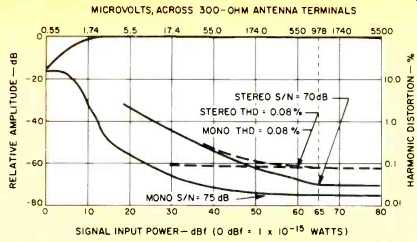
Fig. 1--Mono and stereo quieting and distortion characteristics for the Wide
i.f. setting of the FM section.

Fig. 2--As above for the Narrow i.f. setting.
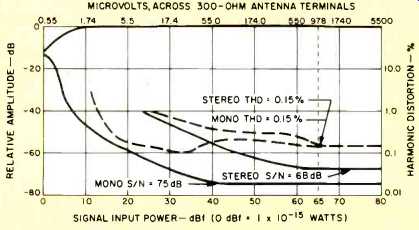
Fig. 3--Distortion vs. frequency for the Wide i.f. setting.
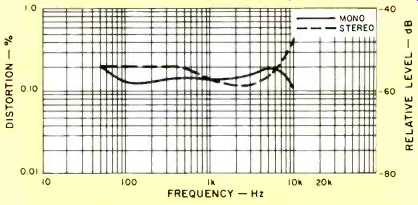
Fig. 4--As above for the Narrow i.f. setting.
Repeating the same measurements in the Narrow setting, us able sensitivity in mono remained the same, but 50-dB quieting improved to a very low 2.0 uV (11.2 dBf) in mono and 27 uV (33.8 dBf) in stereo, both figures being far better than published claims (which may refer only to the. Wide mode).
Mono S/N remained the same, at 75 dB, while in stereo the S/N was fractionally lower at 68 dB. These results are plotted in Fig. 2, as are the 1-kHz distortion characteristics, which measured 0.15 percent for both mono and stereo.
Proof that the wide/narrow options were doing what they were supposed to do was even further evidenced by our cap ture-ratio and alternate-channel-selectivity readings. These turned out to be 32 dB in the Wide mode and 85 dB in Narrow for selectivity, and 1.0 dB and 2.0 dB for capture ratio in the Wide and Narrow modes, respectively. The i.f., image, and spurious response rejections were all in excess of 100 dB, the maximum figure which we are able to read in our laboratory. AM suppression was also excellent, with a reading of 65 dB exactly as claimed.
Figure 3 is a plot of distortion versus frequency, in mono and stereo, for the wide-band mode, while in Fig. 4 we have plotted the same performance characteristics for the narrow-band mode. In wide-band use, THD read 0.1 percent at 100 Hz and 0.18 percent at 6 kHz in mono and 0.16 percent at 100 Hz and 0.18 percent at 6 kHz in stereo. Switching to the narrow-band i.f. mode, THD increased to 0.13 percent at 100 Hz and 0.2 percent at 6 kHz in mono and to 0.2 percent at 100 Hz and 0.18 percent at 6 kHz in stereo. These results are what we would expect in a dual-bandwidth FM circuit of this sort.
Muting threshold and stereo-switching threshold were 5.0 uV (19.2 dBf) in the Wide mode, and changed slightly to 7.0 uV (22.1 dBf) when the Narrow i.f. mode was used. These threshold levels are ideal in terms of the quieting characteristics and other performance levels of this tuner.
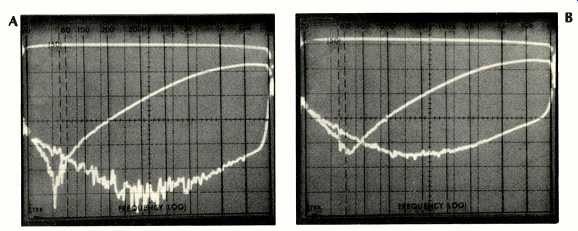
Fig. 5--Frequency response and separation in, a, Wide and, b, Narrow i.f. settings.
Middle trace in both is with MPX Noise Filter switched in.
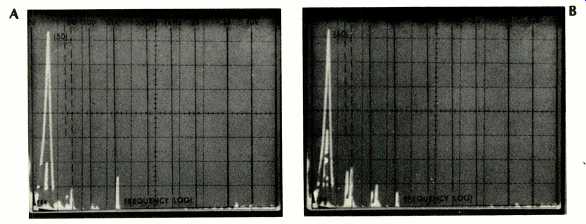
Fig. 6--Spectrum analysis of crosstalk from 5-kHz modulation applied to the
left channel in, a, Wide and, b, Narrow i.f. modes.
Frequency response was virtually flat from 30 Hz to above 15 kHz, as indicated in Fig. 5 (a and b), upper trace. In these plots, vertical sensitivity is 10 dB per division and the sweep is logarithmic from 20 Hz to 20 kHz. The lower traces in Fig. 5 represent separation, while the middle traces show what happens to separation when the MPX or blend switch is activated. Without the MPX-filter switch On, we measured separation of 55 dB at 1 kHz, 49 dB at 100 Hz, and 38 dB at 10 kHz in the Wide mode. Separation decreased to 51 dB at 1 kHz, 40 dB at 100 Hz, and 32 dB at 10 kHz when we switched to the Narrow mode.
The purity of what crosstalk there was in the unmodulated channel when operating in stereo and in the Wide mode is clearly evident from Fig. 6 (a). In Fig. 6 (a and b) sweep is now linear from 0 Hz to 50 kHz, at 5 kHz per horizontal division. The large "spike" at left of each display represents the reference (desired) 5-kHz modulating signal seen at the left-channel output. The lower spike contained within the taller reference spike is the actual 5-kHz crosstalk in the right output channel. Note that it is exactly 54 dB below the reference (each vertical division represents 10 dB). In addition, we see some distortion components to the right, as well as a 19-kHz pilot "blip" some 60 dB below the reference. When the same plot was repeated in the Narrow i.f. mode, separation decreased to some 41 dB (spike contained within taller reference spike) as might be expected for a 5-kHz modulating signal, but in addition, new and larger distortion components were generated at 10 kHz and 15 kHz which were not seen, or were of much smaller amplitude when the Wide mode (Fig. 6a) was employed. These photos clearly illustrate the advantage of having a Wide mode in a good FM tuner, as well as the trade-offs that take place when narrow-band i.f. must be employed.
Dual-Bandwidth AM Tests
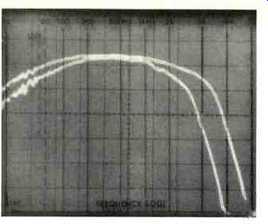
Fig. 7--AM tuner frequency response in Wide and Narrow i.f. modes.
One has but to examine the two frequency response plots of the AM tuner section shown in Fig. 7 to appreciate the fact that Pioneer's unusual incorporation of dual-bandwidth se lection in the AM tuner section of the TX-9800 was not an idle embellishment. The curve, which drops off more rapidly at the low and high frequency ends of the audible spectrum, is typical of the response of most AM tuner sections found in high-fidelity receivers and tuners. The-6 dB roll-off point is at approximately 2.5 kHz. Switching to the wide-band position, response extended to beyond 5 kHz for the same -6 dB roll-off point- and in audible listening tests, the difference is striking. Of course, if you are in a crowded signal area or listen to AM late in the evening, you may well find that you have to give up the better response in favor of improved selectivity, but at least the options are provided in this well-designed tuner.
Listening and Use Tests
In tuning to relatively weak signals, we were impressed by the excellent quieting slope of the FM tuner section. Under these listening conditions, the Narrow setting is definitely preferred, since its quieting slope is even greater or faster than that of the Wide mode. With a good strong signal received, however, switching to the Wide mode causes distinct and audible improvement in sound quality, as it should. The "edginess" often associated with lesser FM designs is completely absent, indicating a minimum of IM distortion. This is especially important when listening to the few live-on-tape concerts which are often broadcast or simulcast in our listening area.
In summary, the Pioneer TX-9800 exemplifies all that is good and legitimate in a carefully engineered and built stereo FM/AM tuner. The glamour, in this case, is on the inside, in the circuitry, rather than on the front panel and, to this serious FM enthusiast (and, I suspect to a great many others as well), that's where it really counts!
-Leonard Feldman
=================
(Audio magazine, Nov. 1979)
Also see:
Pioneer Model TX-9100 AM/FM Stereo Tuner (Equip. Profile, Aug. 1973)
Pioneer F-90 Tuner (Jan. 1984)
Pioneer TX-9500-II AM/FM Stereo Tuner (May 1977)
Pioneer Model TVX-9500 TV Audio Tuner (Equip. Profile, Nov. 1978)
Pioneer SA-V70 Amplifier (Jan. 1987)
= = = =